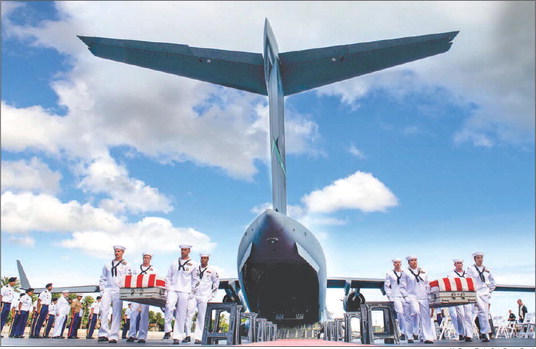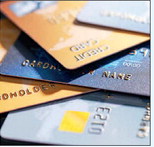Pearl Harbor Remembrance Day ceremonies livestreamed


80th Anniversary
A Day That Lives in Infamy
Each year on Dec. 7, Pearl Harbor survivors, veterans and visitors from all over the world come together to honor and remember the 2,403 service members and civilians who were killed during the Japanese attack on a U.S. naval base in Hawaii Dec. 7, 1941.
Another 1,178 people were injured. Eight Navy battleships were among the 18 Naval ships either damaged or sunk. On Oahu military bases, 178 aircraft were destroyed.
80th Anniversary of Attack
This year marks the 80th anniversary of the bombing. It will be observed with special ceremonies on Tuesday, Dec. 7, which is officially known as National Pearl Harbor Remembrance Day. The day was set aside to honor those who lost their lives in the attack.
Ceremony Livestreamed
The 80th commemoration ceremony will be livestreamed at the Pearl Harbor Visitor Center at 1 Arizona Memorial Place, beginning at about 7:45 a.m. on Dec. 7. LWers will be able to attend virtually by logging on to nps.gov/perl or via fb.com/PearlHarborNPS and fb.com/NavyRegionHawaii or at pearlharborevents.com.
The Pearl Harbor National Memorial and its partners preserve, interpret and commemorate the history of World War II in the Pacific—from the events leading to the attack on Oahu to peace and reconciliation.
This year’s celebration theme is Valor, Sacrifice and Peace. The event will include special ceremonies, a wreath presentation from the Marine Corps Base Hawaii, a Freedom Bell Ringing at the USS Bowfin, a performance of the Pearl Harbor Mass Band, a USS Oklahoma Memorial Ceremony on Ford Island and participation by top American leadership from all branches of government. Pearl Harbor—A Day that Changed the World
Dec. 7, 1941, changed the world. The 80th Commemoration will tell the story of the multipronged attack across the Pacific and in particular the attack on Pearl Harbor.
The goal of the commemoration is to ensure that future generations will understand the valor and legacy of those who perished and those who fought throughout the war.
The commemoration also highlights the importance of the peace that brought reconciliation, a reconciliation that continues to move forward today in creating a better future for all.
Attack on Pearl Harbor
Sunday, Dec. 7, 1941, was supposed to be a day of rest for the military soldiers at Hawaii’s Pearl Harbor naval base on the island of Oahu, according to historical reports. But at 7:55 a.m., Japanese fighter planes zoomed in without warning and attacked the United States Pacific fleet, or naval vessels, moored in the harbor. Thousands of lives would be lost that day.
The sudden attack in Hawaii— at the time a territory of the United States, not a state— took many by surprise, but it was planned.
Adm. Isoroku Yamamoto, commander in chief of the Japanese naval forces, was the mastermind. Yamamoto wanted to take over certain southeastern Asia countries to use their oil to help fuel Japan’s military vehicles and naval fleet, according to historical accounts.
But because the U.S. base in Hawaii was relatively close to these countries, the Japanese believed the U.S would send soldiers from Pearl Harbor to defend the nations if they were attacked.
By destroying the U.S. military presence in the region, the countries Japan wanted to target would be left vulnerable. So Yamamoto decided to move forward with a surprise attack on the U.S. fleet. On Nov. 26, 1941, 31 warships carrying fighter planes and bombers slipped from Japan into the North Pacific. They moved silently until they closed in on the Hawaiian Islands.
At dawn on Dec. 7, 350 planes launched in two waves from Japan’s ships. The bombers dropped bombs on American warships below, while the fighter planes targeted the U.S. aircraft on the ground so they couldn’t fight back, according to nationalgeographic. com.
Following both attacks, 19 U.S. naval vessels were sunk or damaged; 188 aircraft were destroyed. In all, 2,280 servicemen and -women were killed; 1,109 were wounded. Sixty-eight civilians also lost their lives. The at- tack lasted just under two hours.
Repair crews went to work on the ships. Except for the U.S.S. Arizona, Utah and Oklahoma, every damaged ship returned to sea.
The day after the attack, the United States declared war on Japan, officially entering World War II. In the nearly four years that followed, the U.S. Navy sank all of the Japanese aircraft carriers, battleships and cruisers that participated in the Pearl Harbor attack.
The United States and its allies— Britain, France and Russia, among other countries—eventually won the war, defeating Japan and its allies, Germany and Italy.



